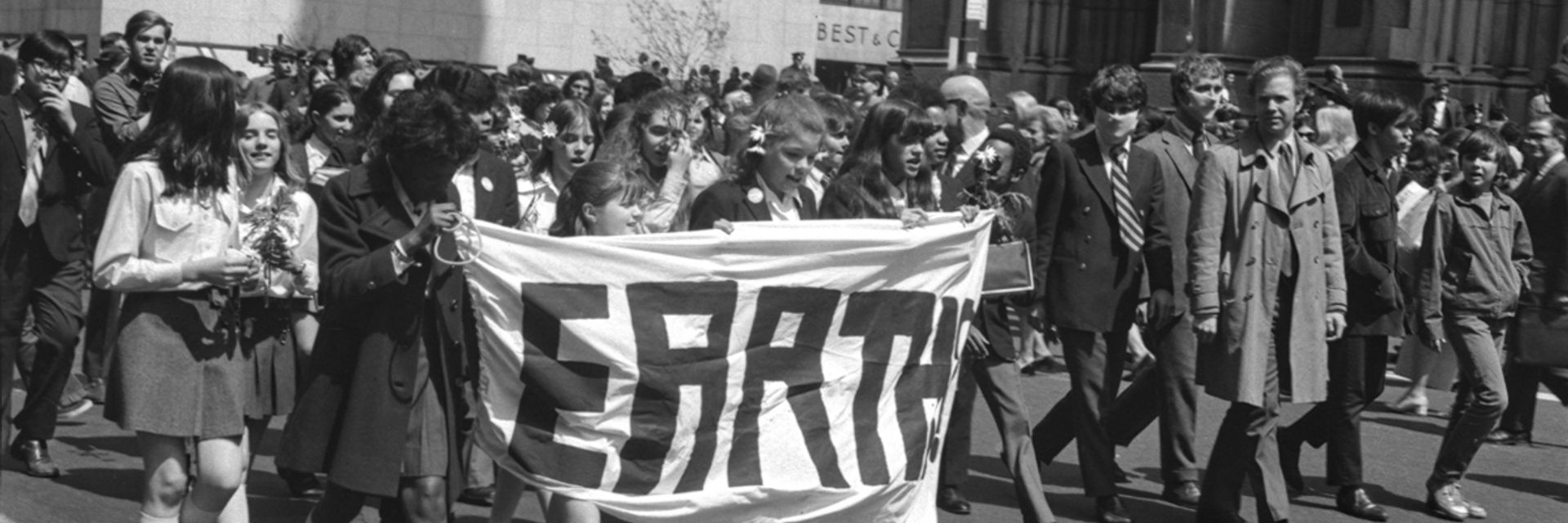Now entering its second half-century, Earth Day began as an all-American protest and became a worldwide event that now spans nearly 200 nations. Little known now is how a series of events, including a magnificent photograph and a pair of ecological catastrophes, combined with a classic work of natural history to inspire a crusading U.S. senator. Gaylord Nelson’s plan to institute what he called a “national teach-in” succeeded beyond his greatest hopes.
◊
Celebrated each spring for 51 years, Earth Day is a worldwide observance promoting promising solutions to the steep ecological problems facing our planet. Global warming, deforestation, and the plastic debris that plagues land and sea, feel overwhelming in their depth and persistence.
And though much needs to be done, the half-century since the first Earth Day has seen tremendous progress in air and water quality, renewable energy, energy efficiency, and urban design. Most important, and easiest to overlook, is the global awareness of the dangers facing the planet’s biosphere. There is now widespread understanding that environmental degradation is an unacceptable crime against nature that every government protecting the well-being of its citizens is obligated to correct.
This was not the case for most of the 20th century. Ecological concerns, if they were raised publicly at all, were generally met with indifference or outright hostility. But in the late 1960s, three events in the United States combined with two groundbreaking books, and one visionary U.S. senator, to create the first Earth Day – and a new era in humanity’s relation with our planet.
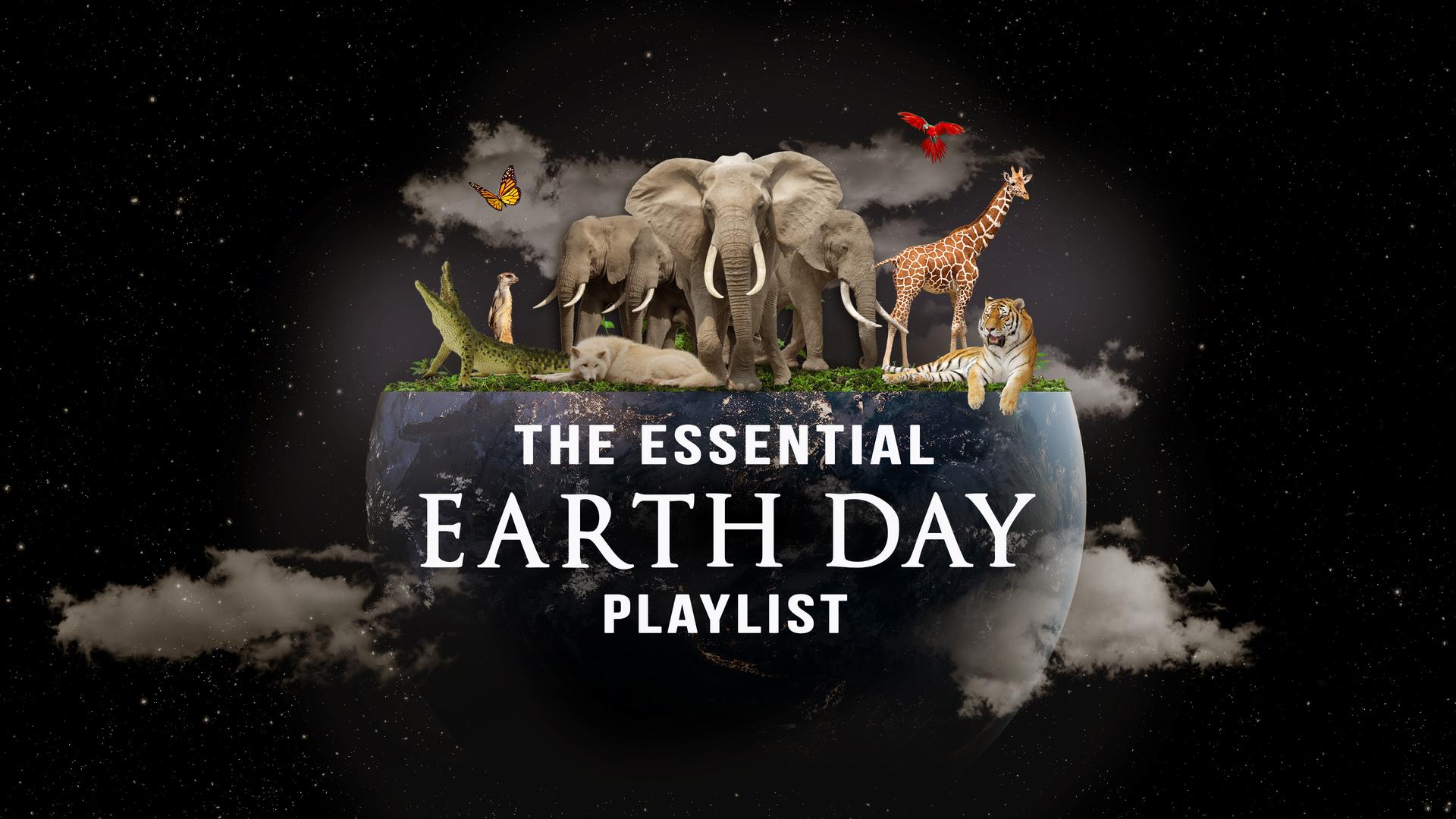
Check out The Essential Earth Day Playlist only on MagellanTV!
An Amazing View from Space
On Christmas Eve 1968, the Apollo 8 space capsule became the first vehicle to carry astronauts into lunar orbit. Jim Lovell, Frank Borman, and Bill Anders spent the first three revolutions with their craft oriented to the Moon’s surface directly beneath them to photograph its many features.
Apollo mission cameras were special Hasselblads, constructed to conform to strict NASA weight limits. The re-engineered cameras had to work flawlessly between 120C and -65C, and used a special Kodak transparency film that held 160 color shots per “roll.”
Completing their fourth transit of the Moon’s dark side, Lovell executed a small rotation that brought the spacecraft’s windows in line with the lunar horizon. Two minutes later, Anders, who worked a handheld camera, gasped at what he saw – the very first view of the bright blue Earth, alive with whirls of white clouds, floating in the deep black of space.
The onboard tape recorder captured the moment. “Oh my God,” he said. “Look at that picture over there! There’s the Earth coming up. Wow is that pretty!”
He aimed his camera. “Hey don’t take that,” Borman joked. “It’s not scheduled.”
“Oh man,” Lovell said. “That’s great.”
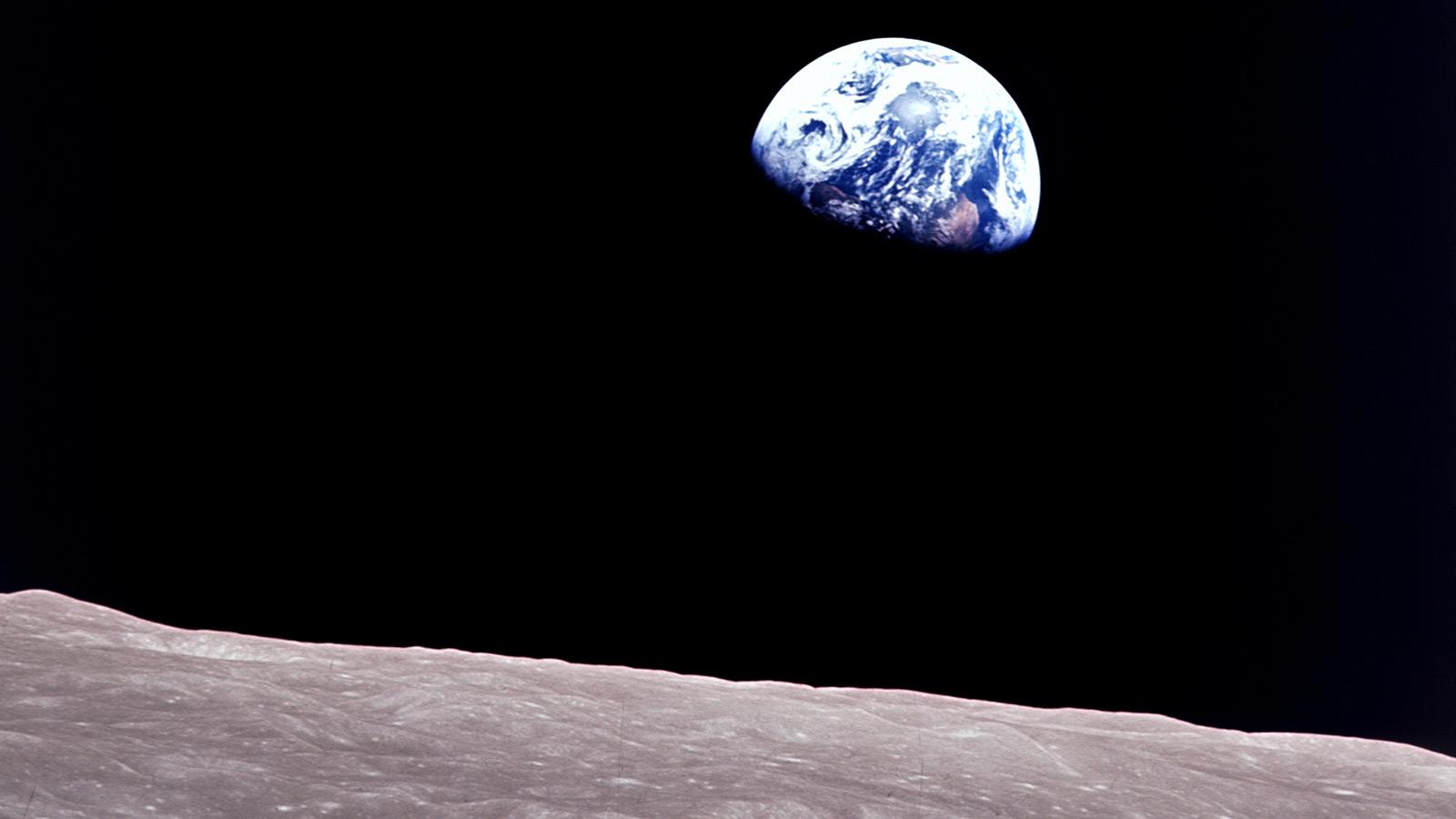
'Earthrise,' photographed by Astronaut Bill Anders, December 24, 1968. (Source: NASA/Bill Anders, via Wikimedia)
Two days after the astronauts’s December 27 return, the photograph landed on the front pages of newspapers around the world.
In a video address for a ceremony honoring the 50th anniversary of the Apollo 8 mission, Anders spoke about his consciousness-changing photograph: “We had worked and come all the way to study the Moon, and what we really discovered was the Earth.”
A Disgusting Oil Spill on America’s Doorstep
Exactly one month after the appearance of Anders’s photograph, an oil well off the coast of the affluent resort town of Santa Barbara, California, suffered a blowout. Rig workers soon capped the ruined wellhead, but the tremendous pressure unleashed by the drilling opened several cracks in the seabed surrounding the rig. An estimated 10,000 barrels of thick petroleum vented into the ocean every day.
The Union Oil Company initially denied the severity of the problem. Winds and tides at first sent the oil offshore. But a storm four days later brought a horrific tide of sticky black goo onto the pristine beaches around Santa Barbara, and eventually sent patches of oil as far south as San Diego.
Offshore drilling had faced local opposition for over 20 years. Residents, who had been assured for decades that the drilling was a safe and clean operation, reacted with fury. An army of volunteers mobilized to mop up the oil with tons of straw, while rescuing and cleaning hundreds of seabirds covered in tar.
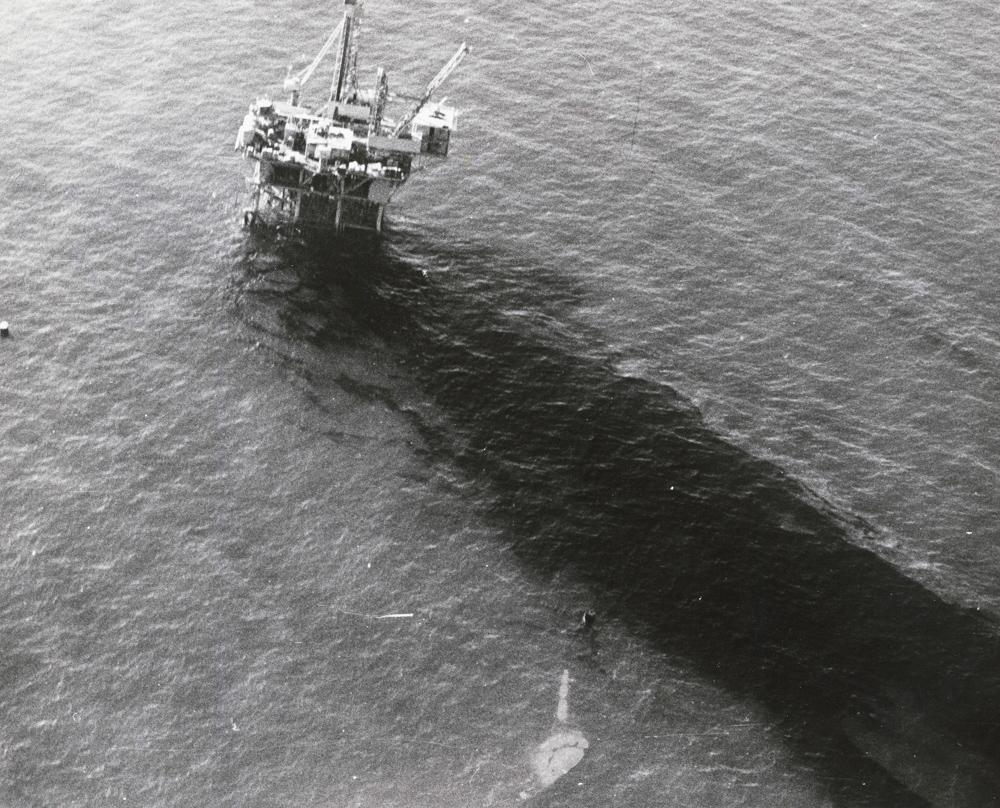
Aerial view of the 1969 oil spill venting from the Union Oil platform. (Source: Dept. of Special Research Collections, University of California, Santa Barbara Library, via Richard Nixon Presidential Library and Museum)
Nearly 4,000 dead birds were found, as were the bodies of sea lions and elephant seals. The death toll of marine life however was almost certainly much higher.
A scant 95 miles north of Los Angeles’s TV nerve center, the Santa Barbara spill was the first widely broadcast ongoing ecological disaster. It lasted ten days before workers could seal the worst cracks in the seabed. A U.S. Senate subcommittee met with local officials in early February. Union Oil’s president only made matters worse when he told the panel he didn’t think the spill was a disaster as no one had been killed. “I am amazed at the publicity for the loss of a few birds,” he said.
While small leaks persisted into 1970, major cleanup was completed in six weeks. In early March 1969, the contaminated beaches were visited by President Richard Nixon, a California native who noted that “the Santa Barbara incident has frankly touched the conscience of the American people.” Official Washington was now paying attention, the outcome of which would soon have significant positive consequences.
A Crusading Senator, Two Groundbreaking Books, and a River on Fire
One Washington official appalled by the Santa Barbara disaster was U.S. Senator Gaylord Nelson, then beginning his second term. A rural Wisconsin native and World War II veteran, he was elected the state’s governor in 1959. In taking office, he invoked the name of the pioneering ecologist, Aldo Leopold. “I wish he were still alive,” Nelson said. “I’d put him in a job where he could do something.”
Born in 1887, Leopold earned a forestry degree from Yale, and joined the U.S. Forest Service. His research there was crucial in recognizing the importance of predators in maintaining a healthy ecosystem. He was named professor of wildlife management at the University of Wisconsin in 1933, and there promoted the replanting of native prairie grasses to prevent erosion.
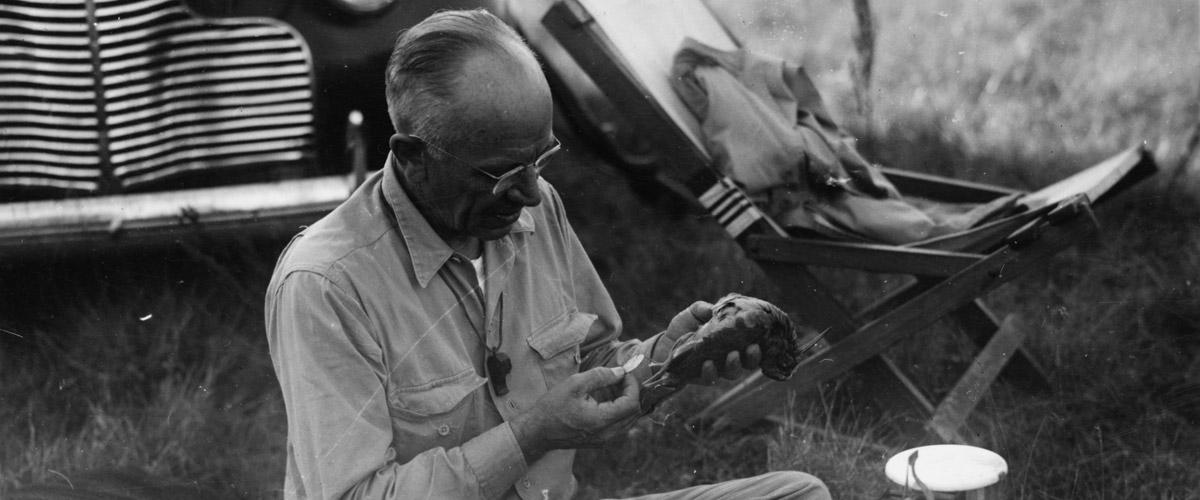
Aldo Leopold examines a captured bird at his Baraboo farm. (Image credit: Aldo Leopold Foundation)
In 1935, Leopold co-founded the Wilderness Society, a group dedicated to preserving land in an utterly wild state. At the same time he bought a worn out 80-acre farm near the town of Baraboo and put into practice methods to restore the natural landscape. There, he wrote the essays that would be published in A Sand County Almanac a year after his 1948 death.
A mix of autobiography and close observation of the natural world, Leopold’s book advocated a “land ethic” apart from the commercial and recreational needs of humans. An understated classic, it first reached a small but influential audience of ecology activists, like Gaylord Nelson, before achieving bestseller status in the 1970s.
In 1962, Rachel Carson’s Silent Spring joined Leopold’s Almanac as central texts of the growing American ecological movement. Carson’s book detailed the fatal consequences of the accumulation of the widely-used pesticide DDT in the environment, especially on the avian population. Though it did not kill birds outright, the poison ruined the integrity of their eggs. Birth rates were crashing.
While long protected from hunting, the American Bald Eagle was placed on the endangered species list in 1967.
And environmental collapse stayed front page news. Three months after the Santa Barbara cleanup, the nation was transfixed by views of another, nearly surreal, ecological disaster. The grotesquely polluted Cuyahoga River, running through the city of Cleveland, Ohio before emptying into Lake Erie, caught fire on June 22, 1969. The blaze lasted about 20 minutes, plenty of time for news photographers to get some memorable shots that were picked up by papers across the country.
Though a source of fatalistic humor to many, the Cuyahoga River fire, coming so soon after the Santa Barbara oil spill, was the final straw for Nelson. A looming ecological catastrophe was impossible to ignore.
The ‘60s had been a period of intense public activism and passionate debates. Marches for civil rights, and against the Vietnam War, led to growing movements for women’s rights and gay liberation. Senator Nelson decided that it was now the environment’s turn.
The First Earth Day Gets Off the Ground
In September 1969, he announced what he called a nationwide “environmental teach-in” for young people, scheduled for the following April. Joining him in organizing the event was U.S. Representative Pete McCloskey of California. A staff of young volunteers was able to coordinate 12,000 events – 10,000 at high schools and 2,000 at colleges – across the country, involving an estimated 20 million young people.
On April 22, 1970, Congress closed for the day. At schools, regular classes were canceled in favor of speeches and special programs. Groups fanned out to pick up trash and march in demonstrations.
A cascade of legislation followed, most crucially the establishment of the Environmental Protection Agency in December of that year. President Nixon also presented Congress with a list of ecological remedies, including billions of dollars to improve water treatment plants, guidelines to lower auto emissions, a tax on leaded gasoline, laws outlawing the dumping of waste into the Great Lakes, and a national plan to treat oil spills.
Following in rapid succession was the Clean Water Act of 1972, and the Endangered Species Act of 1973. At the same time, DDT was mainly banned, as was, by 1976, the use of lead in gasoline.
“My primary objective in planning Earth Day,” Nelson wrote 10 years later, “was to show the political leadership of the nation that there was a broad and deep support for the environmental movement… I was not quite prepared for the overwhelming response that occurred on that day.”
Gaylord Nelson left the Senate in 1981. In 1995, he was awarded America’s highest civilian honor, the Presidential Medal of Freedom, by President Bill Clinton. He passed away in 2005.
Earth Day’s World-wide Appeal
Since 1990, Earth Day has grown in sophistication and global outreach, using computer networks and new media to connect ecological organizations worldwide. In 2000, organizers linked 5,000 groups in 184 countries, as hundreds of thousands met on the National Mall in Washington, DC. In 2010, a reported one billion people took part in Earth Day activities.
For 2021, the organizing body, Earthday.org, has scheduled three days of multilingual, online events emphasizing, among many topics, reforestation, trash clean up, sustainable agriculture, and environmental justice. The Biden Administration has called a global climate summit for the day, recognizing the need for coordinated international effort to address global warming.
Though the many perils facing Earth’s biosphere are profound, so is our awareness of them. And if they sometimes seem impossible to solve, it’s not because of overall indifference, which is the greatest, and ongoing, achievement of Gaylord Nelson’s dream.
Ω
Title Image: Students march down New York’s Fifth Avenue on the first Earth Day in 1970. (Credit: New York City Dept. of Records and Information Services)
